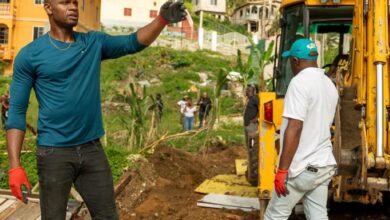Senior cohousing, a trend that is already in Latin America
Do you know which are the Latin American countries that have developed multiple projects to give a better quality of life to the elderly adults?

Cohousing, better known as collaborative housing, is a self-managed housing created in the 70s in Denmark and the Netherlands. The main objective was to host young couples to help with the children and household chores. However, according to the BBC, the concept has been changing, since in the United States and Europe, its use has been mainly in older people. This with the purpose of generating spaces so that the users can live in a collective and collaborative way with their partners or friends, and they can enjoy social and recreational activities.
Leer en español: "Senior cohousing", una tendencia que ya está en Latinoamérica
In this type of architecture, which designs homes more economical, more ecological and with a greater social component, older adults can live in their own or in rented homes. In addition, they have the possibility of visiting their neighbors and enjoying common spaces such as dining rooms, libraries, areas for workshops, laundry, among other things.
The communities of this type have been very popular, mainly because their implementation has led to the reduction of problems of cognitive performance, high blood pressure in older adults and premature deaths associated with loneliness.
Despite the benefits of the Senior cohousing, there are also drawbacks because older adults do not have the same care as if they were in a specialized center. In addition, the maintenance of this type of communities requires a lot of effort, dedication, and work. What this means is that they are not just resting places, because users must preserve the community with great care and effort.
In Latin America, this architectural model is being implemented with the aim of ending what is called an "ungrateful old age". Therefore, some projects are being carried out so that elderly people have a better quality of life. In countries such as Argentina and Uruguay, the trend of Senior cohousing has been increasing.
You can also read: The silent drama of abuse against the elderly
Currently, there are multiple projects in development, because as the ECAM developer, Christian Fulco, told to the newspaper Perfil, "seniors are usually isolated: the idea of a collaborative home is to keep active and accompanied this part of their lives, with common spaces ranging from gyms, pools, and orchards, to medical benefits, with activities for all tastes. It is not about making a building and selling it, but about building a community that responds to the needs of this age group to lead a full life."
Some projects that have been developed in Argentina and Uruguay and that have been very well received are:
- El Gigante neighborhood. It is located in La Plata, Argentina, and it is the first cohousing project developed in the country. It has a cooperative of work, orchard with fruit trees, two community centers, a square and private houses built only with ecological materials.
- The Vida Linda building. This project has 100 independent apartments, ambulance service, common activities that take place on the ground floor of the building and a dining room in which users can buy quality food at a very affordable price.
- Cohousing UY. It is the first project in Uruguay that develops the concept of Senior cohousing. There, users can share economic, environmental and social objectives by fostering stronger relationships between neighbors. The project bets especially on the common areas, as these occupy approximately 80% of the total area with spaces such as cafeteria, library, cinema, games room, gym, DIY workshop, orchard, among others.
LatinAmerican Post | Andrea del Pilar Rojas Riaño
Translated from ""Senior cohousing", una tendencia que ya está en Latinoamérica"





